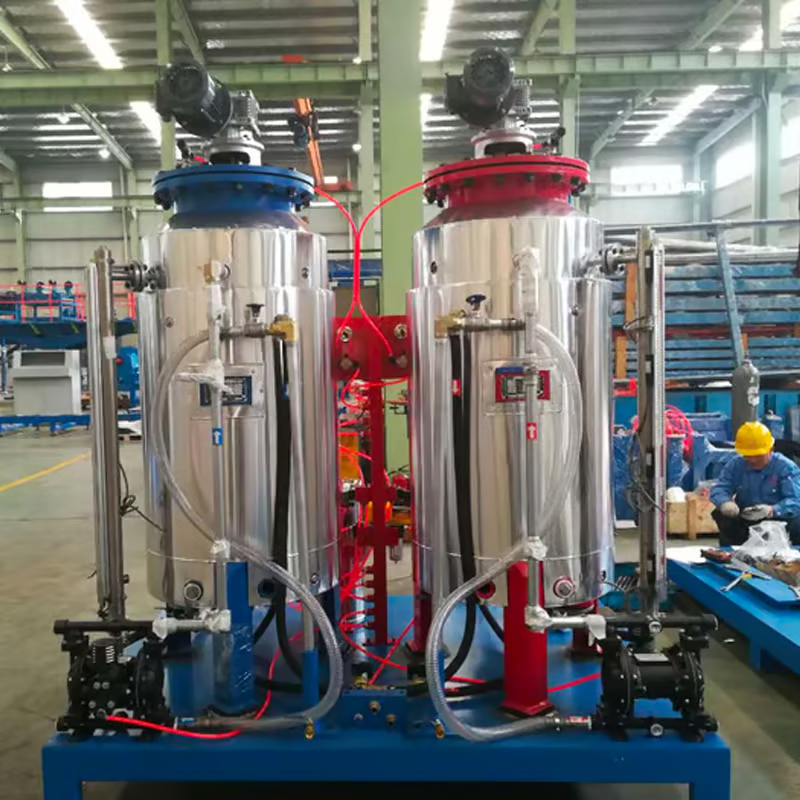Introduction to Two-Component Polyurethane Foaming Machines
Two-component polyurethane high/low pressure foaming machines are advanced equipment used in various industries for producing high-quality foam products. These machines are designed to mix and dispense two-component polyurethane materials accurately, making them ideal for applications where precision is crucial.
How Two-Component Polyurethane Foaming Machines Work
These machines typically consist of two separate components - an A component and a B component. The A component contains the polyol, while the B component contains the isocyanate. When these two components are mixed together in the machine and dispensed, a chemical reaction occurs, causing the materials to expand and form foam.
Benefits of Using Two-Component Polyurethane Foaming Machines
One of the major benefits of these machines is their ability to produce high-quality foam with consistent properties. They are also versatile and can be used for a wide range of applications, including insulation, packaging, and cushioning. Additionally, these machines are highly efficient and can significantly increase productivity.
Applications of Two-Component Polyurethane Foaming Machines
Two-component polyurethane foaming machines are used in various industries, such as construction, automotive, and furniture manufacturing. They are typically utilized for producing insulation foam, seat cushions, packaging materials, and decorative elements. These machines are essential for industries that require high-quality foam products.
Choosing the Right Two-Component Polyurethane Foaming Machine
When selecting a two-component polyurethane foaming machine, it is important to consider factors such as production capacity, mixing ratio accuracy, and ease of maintenance. High-pressure machines are suitable for applications where precision is crucial, while low-pressure machines are more cost-effective for simpler foam products.
Maintaining Two-Component Polyurethane Foaming Machines
Proper maintenance is essential to ensure the longevity and efficiency of these machines. Regular cleaning and inspection of components, such as mixing chambers and dispensing nozzles, are necessary to prevent clogging and ensure consistent foam quality. It is also important to use high-quality polyurethane materials for optimal performance.
Common Challenges Faced with Two-Component Polyurethane Foaming Machines
One common challenge is maintaining the correct temperature and pressure levels throughout the foaming process. Variations in these factors can affect the quality of the foam produced. Another challenge is ensuring proper mixing of the A and B components to avoid inconsistencies in the foam properties.
Recent Innovations in Two-Component Polyurethane Foaming Machines
Advancements in technology have led to the development of more automated and user-friendly foaming machines. New features, such as digital controls and monitoring systems, make it easier to maintain optimal operating conditions and ensure consistent foam quality. These innovations have made these machines more efficient and reliable.
Environmental Impact of Two-Component Polyurethane Foaming Machines
While polyurethane foam is a versatile material, its production can have environmental implications. It is essential to use eco-friendly polyurethane materials and adopt sustainable practices to minimize the environmental impact of foaming processes. Recycling foam waste and reducing energy consumption are some ways to promote sustainability.
Future Outlook for Two-Component Polyurethane Foaming Machines
As industries continue to demand high-quality foam products, the market for two-component polyurethane foaming machines is expected to grow. Manufacturers are likely to focus on developing more advanced machines with enhanced capabilities, such as faster production speeds and improved foam quality. These machines will play a crucial role in meeting the evolving needs of various industries.
Quote Inquiry
Contact us!

